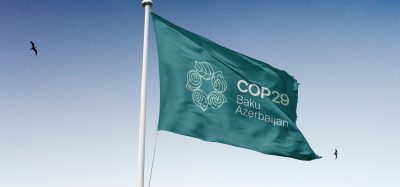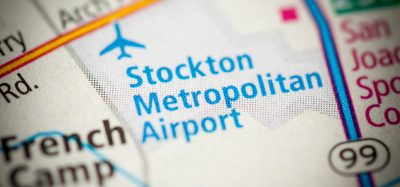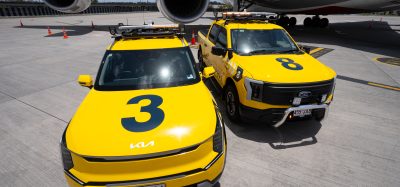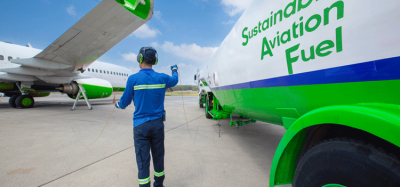Over 700 people attend public forum for the EIA of 3RS
- Like
- Digg
- Del
- Tumblr
- VKontakte
- Buffer
- Love This
- Odnoklassniki
- Meneame
- Blogger
- Amazon
- Yahoo Mail
- Gmail
- AOL
- Newsvine
- HackerNews
- Evernote
- MySpace
- Mail.ru
- Viadeo
- Line
- Comments
- Yummly
- SMS
- Viber
- Telegram
- Subscribe
- Skype
- Facebook Messenger
- Kakao
- LiveJournal
- Yammer
- Edgar
- Fintel
- Mix
- Instapaper
- Copy Link
Posted: 30 June 2014 | Hong Kong International Airport | No comments yet
Airport Authority Hong Kong held two public forum sessions for the Environmental Impact Assessment for expanding Hong Kong International Airport…


Airport Authority Hong Kong (AA) held two public forum sessions today for the Environmental Impact Assessment (EIA) for expanding Hong Kong International Airport (HKIA) into a three-runway system (3RS). Over 700 members of the public attended the forum.
Expressing his gratitude to participants of today’s forum, Kevin Poole, Deputy Director, Projects, AA, said, “All the views expressed at the two sessions of the forum are well heard. I would like to take this opportunity to thank those who share their valuable opinions with us. I also like to thank the EIA team for their hard work in delivering the comprehensive two-year study for the EIA of the 3RS and fulfilling all the requirements of the EIA Study Brief.”
At the forum, AA as well as local and international experts from the EIA consultant team presented the contents, major findings and mitigation measures of the EIA study and answered questions from the audience. The AA and the EIA team further elaborated on the details of the report, particularly in relation to the environmental aspects that have attracted most attention from the public, including:
Chinese White Dolphin (CWD)
- Dr Bernd Würsig and Dr Thomas Jefferson, highly qualified international marine mammal biologists who are responsible for the EIA study on CWDs, are confident that the implementation of the proposed mitigation and compensation measures will effectively help minimise adverse impacts on CWDs during marine construction. In addition, if the 3RS is to be built, the impacts arising from the construction process on dolphins in North Lantau waters will only be temporary, and a series of measures will be implemented during construction phase. They expect that through appropriate mitigation and compensation measures, the potential impacts will be effectively minimised. Hence, CWDs will most likely return to the concerned waters after the completion of construction.
- Among the proposed mitigation and compensation measures are a series of less harmful construction techniques; the establishment of a large, well-managed marine park in the surrounding region (which would link existing and planned marine parks that protect important habitats) and rerouting the high-speed ferries to the areas outside the proposed marine parks.
- Records show that the number of CWDs dropped from about 100 to about 50 during the construction of the existing airport between 1995 and 1998. However, in four out of the five years following the commissioning of HKIA in 1998, the annual number of CWDs was found to have rebounded to more than 100.
Air Quality
- The air quality assessment of EIA study has met the Air Quality Objectives of Hong Kong. The assessment has considered different factors in detail, including the new emissions reduction measures to be adopted at HKIA, as well as the Hong Kong and the Mainland governments’ planned reduction initiatives. These initiatives include the agreement reached by the two governments in end-2012 on the emissions reduction targets for major air pollutants in Pearl River Delta region by 2020. These measures will help mitigate the air pollution impact in the future.
- The EIA air quality assessment adopted conservative evaluations. For example, the EPD’s original data on the sulphur content of vehicle fuels and sulphur dioxide (SO2) emission was used in the EIA as a basis to assess SO2 emission by land transport in 2031. In this regard, the assessment results do not cover planned future emissions reduction measures.
- The HKSAR government in October 2012 issued a technical memorandum based on the Air Pollution Control Ordinance, which will tighten the caps on annual emissions of three air pollutants (i.e. SO2, nitrogen oxide (NOx) and respirable suspended particulates (RSP)) by power plants starting 2017. The 3RS EIA has also taken into account the 2017 emission limits in the assessment of air pollutants generated by power plants in 2031. The assessment results are in fact more conservative because it does not take into account any contributions to emissions reduction after 2017.
- The emission of NOx and RSP is expected to decrease significantly in the future, given the HKSAR government’s efforts to reduce vehicle emissions. Meanwhile, current SO2 emission from vehicles is already at low levels with minor impact on overall air quality.
Marine Fish Species of Conservation Value
- The EIA report has pointed out that only one Longheaded eagle ray was recorded within the land formation footprint by trawl survey over a 12-month period. The other five marine fish species of conservation value (Pale edged sting ray, Goatee croaker, Long tooth grouper, Orange spotted grouper, Tiger toothed croaker) were recorded outside the land formation footprint. The six marine fish species are highly mobile, and are also found in nearby and neighbouring waters, so the assessed potential impact of the construction is acceptable.
- Isolated colonies of Gorgonian Guaiagorgia sp. were recorded in low density, along the existing artificial seawall at the north of Chek Lap Kok within the proposed land formation footprint. The species is commonly found in western Hong Kong waters including Sha Chau and Lung Kwu Chau marine parks, Tai O, Tung Chung, Sunny Bay and the Brothers Islands.
Since the receipt of the EIA Study Brief in August 2012 until April 2014, AA has been working closely with the team of international and local experts to carefully study the potential impact of 3RS on 12 specific environmental aspects, in a highly prudent, transparent and professional manner. The study findings and possible impacts, together with the proposed mitigation measures, are clearly stated in the report.
AA is committed to addressing the likely environmental effects arising from the 3RS project and proposed more than 250 measures to avoid, minimise, mitigate and compensate for potential environmental impacts in the EIA report. The report concluded that all the potential impacts of the 3RS project will be reduced to an acceptable level, given the tremendous efforts made in identifying, avoiding and minimising the potential impacts with extensive measures proposed.

















